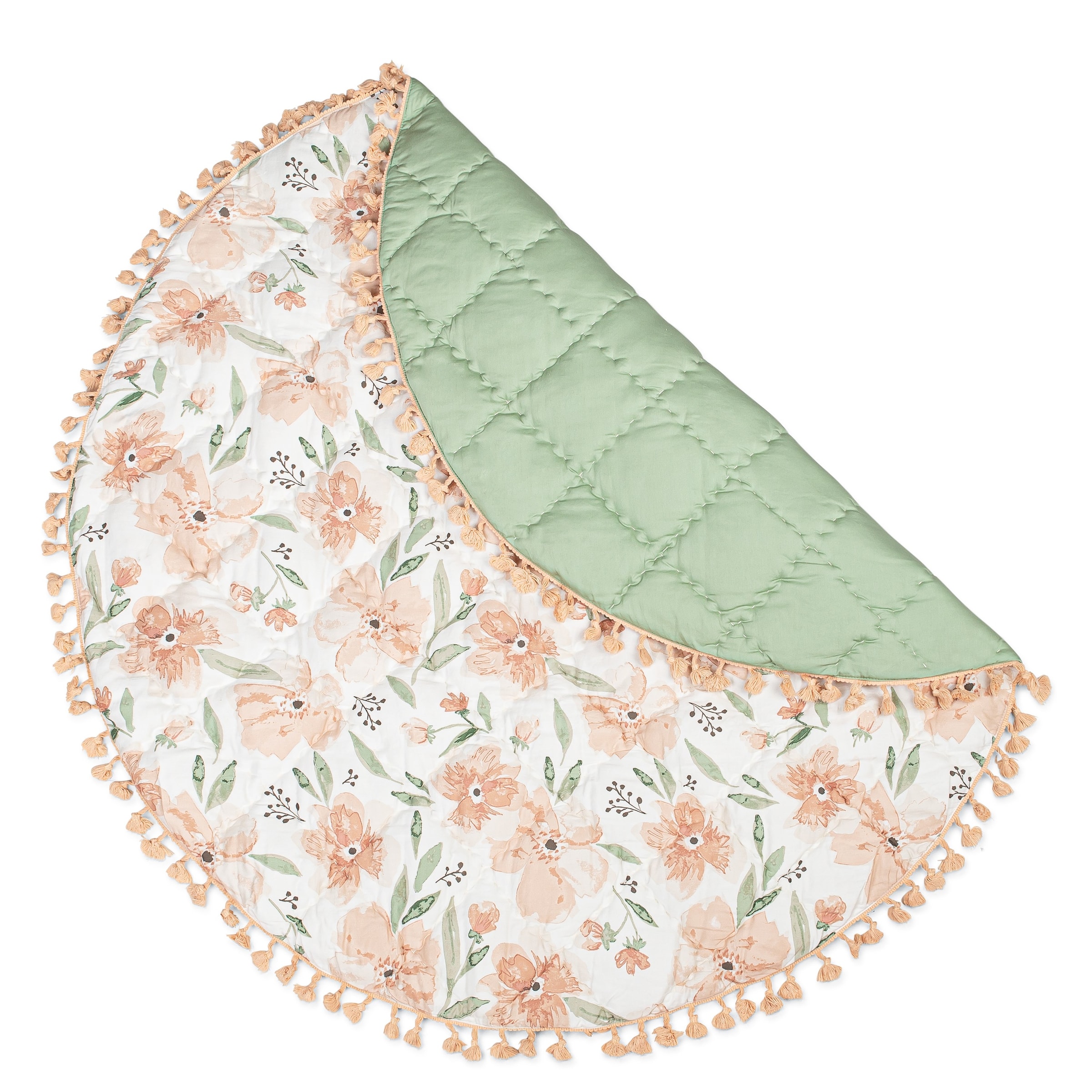Twice a year, parents everywhere sigh at the thought of changing the clocks. Daylight saving and baby sleep just don’t mix easily. That one lost or gained hour can throw off your baby’s sleep schedule, leaving you with early wake-ups, late bedtimes, and a little one who feels out of sorts.
The tricky part is that babies don’t care what the clock says; their bodies follow circadian rhythms, which are guided by light and daily routines. A small shift in time can feel like a big disruption, especially for infants who rely on consistency to feel secure.
The good news is that with a steady infant sleep routine and a few simple adjustments, you can ease the transition. Creating a calming environment, like using blackout curtains to block early morning light or cozy sleep essentials from Crane Baby, helps signal to your baby that it’s time to rest, no matter what the clock says.

Why Does a One-Hour Change Disrupt a Baby’s Sleep?
It’s amazing how much difference one little hour can make. For babies, even a small change in timing can throw off their whole rhythm. That’s because a baby’s sleep schedule isn’t tied to the clock on the wall; it’s guided by their circadian rhythm, or internal body clock.
This rhythm is shaped by light exposure and daily routines. When the sun rises earlier or sets later after daylight saving, a baby’s body doesn’t automatically shift with it. The result? Early morning wake-ups, extra fussiness or a harder time settling down at night.
The good news is that babies thrive on consistency. A steady infant sleep routine and a calm, cozy environment can help soften the disruption. Simple steps like dimming lights before bedtime, using blackout curtains to block out unwanted light and sticking to familiar soothing routines make the transition smoother and give babies the cues they need to rest well.

How to Adjust Baby Bedtime for Daylight Saving (Quick Answer)
To adjust baby sleep schedule with daylight saving, start a few days early. Shift naps, feedings and bedtime by 10–15 minutes each day until everything lines up with the new time. Keeping a consistent baby bedtime and nap routine during this transition helps babies settle more easily.
Why This Works
Babies rely on routine and light cues to know when it’s time to rest. By moving their schedule in small steps instead of one big change, their internal clock has time to catch up. This gradual shift prevents overtiredness, makes bedtime smoother and helps the whole family adjust with less stress.

Spring Forward: Helping Babies Adjust When We Lose an Hour
When clocks move forward, families technically “lose” an hour of sleep. For babies, that can mean later bedtimes, restless nights and extra crankiness during the day. The good news is there are a few simple ways to make the transition easier.
Strategy 1: Gradual Shift (Proactive Approach)
This is the most common method and works well for many families. About 4–6 days before the time change, start moving your baby’s entire schedule. That means wake-ups, naps, feedings and bedtime, a little earlier each day. A 10–15 minute shift is enough to help their body adjust without too much fuss.
Example: If bedtime is usually 7:00 PM, move it to 6:45, then 6:30 and so on, until the new 7:00 PM feels natural once the clock changes. Tools like blackout curtains to block evening light or a soothing baby bedtime routine make this approach even smoother.
Strategy 2: Go With the Flow (Reactive Approach)
Some parents prefer to simply change the clocks on Sunday morning and let the baby’s schedule catch up naturally. This can mean a later bedtime and wake-up time for a few days, but many babies adapt quickly. Families with flexible mornings often find this approach less stressful. White noise, swaddles and cozy flat sheets can help signal sleep when the timing feels “off.”
Strategy 3: Weekend Split (Quick Adjustment)
If planning days ahead feels overwhelming, try the middle ground. On Saturday night, put your baby to bed about 30 minutes earlier than usual. On Sunday, start following the new clock time for naps, feeds and bedtime. This gives your baby a head start without requiring a full week of adjustments.

Fall Back: Helping Babies Adjust When We Gain an Hour
When clocks “fall back,” it can feel like the day starts way too early. Babies may wake an hour earlier than usual, leaving parents wondering how to get everyone back on track. The key is to help their internal clock adjust gradually while keeping a comforting sleep environment.
Option 1: Gradual Adjustment (Proactive)
A few days before the time change, shift your baby’s bedtime and nap schedule later by 10–15 minutes each day. Small changes give their body time to adapt without becoming overtired. Dim lighting in the evening, cozy crib bedding and a soothing baby bedtime routine can reinforce the shift and signal that it’s time to sleep.
Option 2: Adjust After the Change (Reactive)
If the time change has already arrived, start the morning in a dark room for an extra 10–15 minutes before beginning the day. Continue moving naps and bedtime later in small increments over the following week until the schedule aligns with the new clock. Using blackout curtains, sleep sacks or other comfort items in the crib can help maintain a calm sleep environment, even during early morning light.

Universal Tips for Supporting Baby Sleep During Any Time Change
Changing the clocks can feel disruptive, but there are a few simple ways to make the transition easier for babies. These tips help support a baby’s sleep schedule and reduce fussiness, no matter if it’s Spring Forward or Fall Back.
Harness the Power of Light
Light is one of the strongest signals for a baby’s internal clock. Try to get 15–20 minutes of morning sunlight soon after your baby wakes. In the evening, dim the lights about an hour before bedtime to encourage natural melatonin production. Avoid screens in the nursery, as blue light can interfere with sleep.
Create a Calm, Cozy Sleep Space
A consistent sleep environment helps babies settle more easily. Keep the nursery dark during sleep times and consider using a white noise machine to block out sudden sounds. Cozy sleep sacks, soft crib bedding and comfort items provide a sense of security that reinforces a baby bedtime routine.
Stick to a Consistent Bedtime Routine
Familiar cues like a bath, a story or a gentle lullaby signal to a baby that it’s time to rest. A consistent routine matters more than the exact clock time and can help buffer against the temporary disruptions caused by daylight saving. Small, predictable steps make the adjustment smoother and keep both naps and nighttime sleep on track.

Beyond the Clock: Supporting Parent and Baby Emotions
Adjusting to daylight saving isn’t just about shifting schedules; it’s also about how both babies and parents handle the change. Babies pick up on stress, so a calm, consistent approach can make a big difference. Supporting emotional well-being helps your little one feel secure while their sleep schedule adjusts.
Tips for Sensitive Babies
Some babies are more sensitive to changes in routine and may react with extra fussiness or clinginess. For these little ones, starting adjustments a week or more in advance can help. Shift nap and bedtime in smaller increments, like 5–10 minutes, and add extra snuggles or quiet playtime to provide reassurance. Familiar sleep items, cozy bedding and a consistent bedtime routine signal safety and comfort.
Supporting Yourself as a Parent
Parental stress can affect a baby’s sleep just as much as the time change itself. Keep expectations realistic, practice patience and allow some flexibility in the schedule. Taking care of your own rest, adjusting bedtime if needed or using quiet moments to recharge, makes it easier to respond calmly to early mornings or night wakings. A gentle, consistent approach benefits both baby and parent and makes the transition feel smoother for the whole family.
Daylight saving doesn’t have to turn your baby’s sleep schedule upside down. Small, gradual shifts, consistent bedtime routines and a calm sleep environment help make the transition smoother for both babies and parents.
Creating a cozy, dark nursery with blackout curtains, soft crib bedding and comforting sleep essentials can support naps and nighttime rest, no matter the time change. By combining these practical steps with patience and consistency, it’s possible to navigate daylight saving with minimal stress and keep your little one sleeping peacefully.
For all of your crib bedding and nursery essentials, shop Crane Baby.
Frequently Asked Questions About Daylight Saving and Baby Sleep
How long does it take for a baby to adjust to daylight saving?
Most babies adjust within a few days, but some may take up to two weeks. Keeping a consistent baby bedtime routine and gradually shifting naps and bedtime can help them settle faster.
How can you adjust baby’s sleep for DST?
Start a few days before the clock changes by moving naps, feedings and bedtime in 10–15 minute increments. For sensitive babies, smaller steps of 5–10 minutes may work better. Using blackout curtains, cozy sleep sacks and a calm bedtime routine helps support the adjustment.
Do babies understand daylight saving time?
Babies don’t understand the concept of clocks. Their sleep schedule is guided by circadian rhythm, light exposure and routines rather than the time on a clock. Gradual adjustments and consistent routines help their body adapt.
How to get baby to sleep later after daylight saving?
For early wake-ups, keep the nursery dark in the morning and continue moving naps and bedtime later in small steps. Consistent sleep cues, like a familiar bedtime routine and comforting crib items, signal that it’s still sleep time.
Can daylight saving affect baby sleep?
Yes, even a one-hour shift can disrupt a baby’s sleep schedule, causing early wake-ups, fussiness or trouble settling at bedtime. Gradual schedule adjustments, consistent routines and a calm sleep environment help minimize these disruptions.



